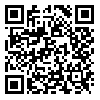Volume 4, Issue 2 (June 2025)
IJER 2025, 4(2): 0-0 |
Back to browse issues page
Download citation:
BibTeX | RIS | EndNote | Medlars | ProCite | Reference Manager | RefWorks
Send citation to:



BibTeX | RIS | EndNote | Medlars | ProCite | Reference Manager | RefWorks
Send citation to:
Ghasemian A, pourshafei H, Ayati M, Alavi S M K. (2025). Indicators and Components of Religious Education Curriculum in Higher Education: A Synthesis Study. IJER. 4(2),
URL: http://ijer.hormozgan.ac.ir/article-1-343-en.html
URL: http://ijer.hormozgan.ac.ir/article-1-343-en.html
1- PhD student in Curriculum Planning, University of Birjand, Birjand, Iran, Department of Educational Sciences, Farhangian University, P.O. Box 14665-889, Tehran, Iran
2- Associate Professor of Educational Management, Department of Educational Sciences, Birjand University, Birjand, Iran ,Hpourshafei@birjand.ac.ir
3- Associate Professor of Curriculum Planning, Department of Educational Sciences, Birjand University, Birjand, Iran
4- Associate Professor of Hakim Sabzevari University, Sabzevar, Iran
2- Associate Professor of Educational Management, Department of Educational Sciences, Birjand University, Birjand, Iran ,
3- Associate Professor of Curriculum Planning, Department of Educational Sciences, Birjand University, Birjand, Iran
4- Associate Professor of Hakim Sabzevari University, Sabzevar, Iran
Abstract: (1028 Views)
Objective: Religious education constitutes a significant component of academic curricula for students. Beyond its function in reinforcing the religious identity of learners, this vital aspect contributes to the realization of additional educational objectives within the higher education framework. An understanding of the elements and indicators inherent in the religious education curriculum lays the groundwork for the development of a comprehensive model in the domain of religious education. Consequently, the primary objective of the present study is to delineate the dimensions and components of the religious education curriculum model.
Methods: The methodological approach employed in this research is qualitative, utilizing synthesis research as its methodological framework. The research population encompasses all articles (153 in total) that have been published in specialized and scholarly databases from 2008 to 2024. The research sample consists of 27 articles, which were selected through thematic monitoring, theoretical data saturation, and purposeful sampling. For the purpose of data analysis, content analysis was employed utilizing a categorization method grounded in Roberts' synthesis research model.
Results: To verify the validity of the findings, the recoding of results was conducted in accordance with the Scott method (2012), yielding an agreement coefficient of 87% between evaluators.
Conclusions: The components and indicators of the religious education curriculum model were systematically organized into seven dimensions, 30 axes, and 102 categories, which include the dimensions of objectives, comprehensive characteristics, teacher attributes, evaluation methods, environmental factors, teaching-learning strategies, and content.
Methods: The methodological approach employed in this research is qualitative, utilizing synthesis research as its methodological framework. The research population encompasses all articles (153 in total) that have been published in specialized and scholarly databases from 2008 to 2024. The research sample consists of 27 articles, which were selected through thematic monitoring, theoretical data saturation, and purposeful sampling. For the purpose of data analysis, content analysis was employed utilizing a categorization method grounded in Roberts' synthesis research model.
Results: To verify the validity of the findings, the recoding of results was conducted in accordance with the Scott method (2012), yielding an agreement coefficient of 87% between evaluators.
Conclusions: The components and indicators of the religious education curriculum model were systematically organized into seven dimensions, 30 axes, and 102 categories, which include the dimensions of objectives, comprehensive characteristics, teacher attributes, evaluation methods, environmental factors, teaching-learning strategies, and content.
Type of Study: Original |
Subject:
Educational Studies
Received: 2025/01/22 | Accepted: 2025/03/12 | Published: 2025/06/1
Received: 2025/01/22 | Accepted: 2025/03/12 | Published: 2025/06/1
Send email to the article author
| Rights and permissions | |
 |
This work is licensed under the Creative Commons - Attribution 4.0 International. |






